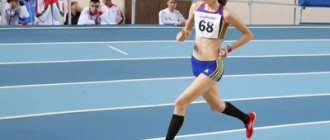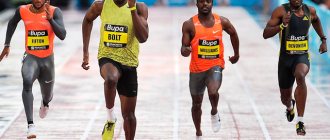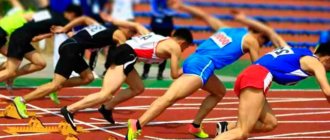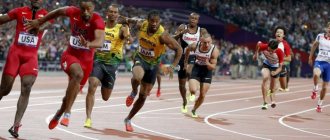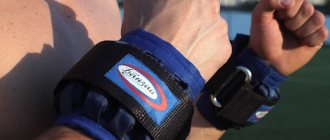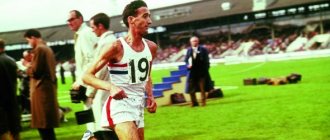Running has become very popular today. You just have to walk down the street and you can see a man running. For example, the shortest distance a runner should run is about three kilometers. Called the long distance, from three to thirty kilometers are the main ones for athletics.
Long distance standards
Athletics is considered the oldest sport. Methods and techniques for improving the strength abilities of runners have evolved over the centuries. That is why the norms of this sport are quite difficult.
Attention! In the modern world, runners have a lot of knowledge about this sport and demonstrate excellent results. But one technique cannot do it. If you find out how much time running athletes spend training, you might be even more surprised.
| running standards, men | ||||||
| Discipline | Master of Sports of International Class | Master of Sport | Candidate Master of Sports | 1st category | 2nd category | 3rd category |
| 3 km | 7.55,0 | 8.04,0 | 8.30,0 | 9.00,0 | 9.40,0 | 10.20,0 |
| 5 km | 13.23,0 | 14.00,0 | 14.40,0 | 15.30,0 | 16.34,0 | 17.47,0 |
| 10 km | 28.07,0 | 29.26,0 | 30.37,0 | 32.30,0 | 34.40,0 | 38.00,0 |
| 42 km 195 m | 2.14,00 | 2.20,00 | 2.28,00 | 2.37,00 | 2.50,00 | finish the distance |
| running standards, women | ||||||
| Discipline | Master of Sports of International Class | Master of Sport | Candidate Master of Sports | 1st category | 2nd category | 3rd category |
| 3 km | 8.53,0 | 9.16,0 | 9.55,0 | 10.40,0 | 11.30,0 | 12.30,0 |
| 5 km | 15.26,0 | 16.13,0 | 17.00,0 | 18.11,0 | 19.40,0 | 21.20,0 |
| 10 km | 32.00,0 | 34.00,0 | 35.50,0 | 38.21,0 | 41.30,0 | 45.00,0 |
| 42 km 195 m | 2.32,00 | 2.44,00 | 3.00,00 | 3.14,00 | 3.30,00 | finish the distance |
Regularity of training
Skipping workouts will have a detrimental effect on your fitness, time will be lost, and progress in results will be in question . Skipping two or three workouts a month will not greatly affect the results, but systematic omissions will reduce all efforts to zero. Stability plays an important role in achieving the desired result.
Missing more than six workouts a month is generally catastrophic, but if this happens due to some circumstances, then you need to include strength exercises in your training schedule. This will allow you to improve your performance faster.
Distance at 5000 m.
The 5 kilometer race is an Olympic running discipline.
Typically, participants run this distance: in the summer over 12 and a half laps, the length of which is 400 meters, in the winter the race takes place indoors on a 200-meter circle. Participants run 25 laps.
The best result at a distance of 5 kilometers for men outdoors was set by the Ethiopian athlete Kenenis Bekele . He was able to run this interval in 12:38.36. The result cannot be surpassed for about 10 years. Kenenise Bekele is also considered to be the indoor 5-kilometer record holder. He ran this distance in 12:48.61.
The best time in the female outdoor 5000 m was set by Ethiopian athlete Tirunesh Diababa, who ran the distance in 14:11.15. Tirunesh's sister Dibaba Genzebe became the indoor record holder. She ran the 5,000 meters in 14:18.8.
How to train?
Preparing a runner for distances over 3000 meters includes 4 training methods, carried out as the athlete completes a program plan in which the load is distributed for the week, month and even a year in advance.
- Distance training. Occupies 60-70% of the total load performed by the athlete during training. It consists of jogging for a limited time of 30-50 minutes at a pace of 70-80% of the maximum heart rate.
- Threshold training. It consists of repeating segments of 500-1500 meters several times with a rest break of no more than 2 minutes. The running intensity is about 80-90% of the maximum possible heart rate. With the help of threshold loads, the level of anaerobic metabolism is trained - performing efforts with a high oxygen debt. The later the anaerobic threshold occurs, the longer the body is able to work in optimal condition.
- Interval training. The athlete runs a certain distance (5 or 10 km) and performs accelerations limited by time or distance (1 minute 20 seconds or 400 meters). After which he reduces the pace that was before the acceleration and continues to run for 1-2 minutes or 300-500 meters.
- Speed training. Running is used in segments of 400 meters (circle of the stadium) with the goal of running 5-10 seconds faster than during the entire distance. Thus, the athlete trains speed-strength endurance and develops the ability to overcome each individual segment of the distance faster than before.
Running long distances requires minimal energy expenditure during the effort. This is done by regularly improving technique and increasing the runner's physical fitness.
Distance at 10,000 m.
The 10 kilometer distance is held on a road or course and is included in the program of the World Running Championships. The record holder for this distance is Ethiopian Kenenise Bekele. In 2005, he was able to cover 10,000 meters in 26:18.52 (stadium time). Kenyan athlete Leonard Komon in 2010 became the record holder for running 10,000 meters on the road. His time is 26:18.54.
The best time among women was set by Ethiopian athlete Almaz Ayan at the 2006 Olympics in Rio.
She managed to complete 25 laps in 29:18.46. The record holder for running 10,000 meters on a road is England's Paula Radcliffe. She achieved the best result in the world in 2003 in 30:22.0.
Doing exercises to increase muscle strength
- The plank exercise will help improve muscle quality. You need to lie on the floor face down, resting on your elbows. The body is extended in a straight line, supported by the arms and tips of the toes. You need to hold on like this for 1 minute, gradually increasing the duration according to your fitness level.
- Squats, starting position with feet shoulder-width apart, toes out. When squatting, you need to rest on your entire foot without bending your back. Squat as low as possible, straighten up completely. Squats and jumps are performed with a straight body, feet shoulder-width apart. The squat is done while inhaling, the arms are stretched out in front of you, and jumping as you exhale.
- Lunges begin with the legs together, one leg is thrown far forward while squatting, and the center of gravity is transferred to it. The front knee should not extend beyond the foot, this is very important for the safety of the knees. The knee of the back leg is located a few centimeters above the floor, but does not touch it. Leaning on your forward leg, you need to rise from the squat and return to the starting position. The same is done with the other leg.
- Jumping lunges are done from a starting position with one leg in front and the other behind. The hands are placed on the hips, the legs are bent, forming a right angle. The body moves forward, the back knee drops towards the floor into a lunge position. After this, you need to push off the floor, jump and change legs in the air. You need to lower yourself to the floor into a lunge position with the other leg. The legs change during the jump.
Marathon 42195 m.
The marathon is part of the athletics discipline. The distance is 42195 meters .
Highway marathons are held. The best marathon time among men was set by a Kenyan athlete in 2014 in the marathon, which took place in Berlin (2:02.58). Paula Radcliffe holds the female marathon record. In 2003, she was able to set a record in the London Marathon, running the distance in 2:14.25.
Half marathon
There is another one of the most popular distances - half marathon . Accordingly, it is 21 km 97.5 m . The half marathon is one of the milestones in the training of amateur runners, who just a few months ago could not run even a kilometer.
At almost any running competition, half marathons are also held in parallel with the marathon for those who find it too difficult to run the full distance. Among runners, a half marathon is simply called a half marathon .
Ultramarathon from 70,000 m and beyond.
An ultra marathon includes all races over a distance of more than 42,195 m . Usually, ultra marathons are held at a certain interval or with a certain time (the participant who covers the longest period in a certain time wins). The main distances are 50,000 m, 1,000,000 m, 50 miles, 100 miles. Races with a certain time are held from 6, 12, 24 hours to 3 and 6 days.
ATTENTION! Each type of running requires special preparation. For long-distance running, special strength training is considered to be the development of endurance. Every athlete tries to improve their skills to achieve high results.
Warm up before running
ATTENTION! The key to a successful workout is warming up. By putting stress on your muscles while running, you redistribute the blood flow, it is almost evenly distributed throughout the body, flowing a little more to the leg muscles. The body is saturated with oxygen, the muscles warm up, due to which they become flexible and elastic.
And without warming up, the muscles will not get into the required shape quickly, and besides, a sudden load can only do harm . In this case, there is a high probability that physical activity will lead to muscle injuries. This is why even professionals spend a lot of time warming up.
There are special warm-up complexes. But if your goal is not a new world record, but staying in shape, a light warm-up is enough. It can be different, running, consisting of exercises or combined.
Famous marathons in the world
Every year, about 800 marathon races are held around the world.
The most popular and prestigious marathons in the world:
- Boston Marathon
- New York Marathon
- Chicago Marathon
- London Marathon
- Tokyo Marathon
- Berlin Marathon
The number of marathon runners at the start exceeds 30 thousand.
The prize money for the 2008 Boston Marathon was $796,000, with $150,000 paid to the winner.
The winners of the Berlin Marathon in 2012 received $500,000.
It is considered an honor simply to take part in such a prestigious start together with the leading runners, joining the world athletics movement.
Why 42,195 meters?
Marathon is a discipline with an interesting history. In 490 BC. A battle took place between the Greeks and Persians near the Greek city of Marathon. Immediately after the Greek victory, one of the soldiers ran to Athens. Having reached the capital, he reported the joyful event and died.
When they calculated the distance that Pheidippides ran, as the war was called, it turned out to be about 40 kilometers. Almost every person has heard this legend. But where did another 2195 meters come from?
At the 1896 Summer Olympics in Athens, athletes covered the route of Pheidippides. The Olympic Committee measured the distance. It turned out to be about 40 kilometers.
At the 1908 London Olympics the distance was planned to be 40.23 kilometers or 25 miles. After planning it, the Queen of England wanted to watch the race from her balcony. The organizers had no choice but to satisfy Her Majesty's request. After the race, the distance was re-measured and the result was 42,195 meters.
After that, 2 more Olympics took place. The length of the distance varied. It was necessary to determine the exact distance of the marathon in order to approve world records. The London race turned out to be the most spectacular in its short history, so they decided to stop at a distance of 42,195 meters.
What marathon runners think about - interesting facts
In 2022, a study was conducted in which 10 marathon runners took part. While running, a voice recorder was attached to them, and the runners themselves had to comment out loud all their thoughts:
- 28% of thoughts were about the environment, and positive ones;
- Slightly more, 32% of thoughts about discomfort from fatigue when running
- 40% of thoughts about the correct distribution of forces along the distance.
During a successful race, professionals think about how they will spend the money they win, and beginners spend the last 7 kilometers imagining how soon they will lie in the arms of masseuses.
It’s not uncommon for creative people to find the muse they’ve been looking for during a run. The famous Japanese writer Haruki Murakami took part in many marathons, which were sources of inspiration for him to write books. In general, a 42-kilometer marathon is an excellent opportunity to be alone with yourself and answer many questions.
What did you think about during the distance or will you think about at your first marathon?
